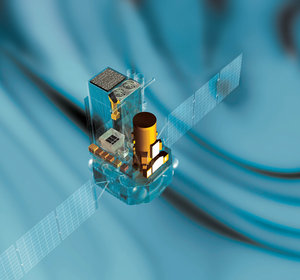Accept all cookies Accept only essential cookies See our Cookie Notice

About ESA
The European Space Agency (ESA) is Europe’s gateway to space. Its mission is to shape the development of Europe’s space capability and ensure that investment in space continues to deliver benefits to the citizens of Europe and the world.
Highlights
ESA - United space in Europe
This is ESA ESA facts Member States & Cooperating States Funding Director General Top management For Member State Delegations European vision European Space Policy ESA & EU Space Councils Responsibility & Sustainability Annual Report Calendar of meetings Corporate newsEstablishments & sites
ESA Headquarters ESA ESTEC ESA ESOC ESA ESRIN ESA EAC ESA ESAC Europe's Spaceport ESA ESEC ESA ECSAT Brussels Office Washington OfficeWorking with ESA
Business with ESA ESA Commercialisation Gateway Law at ESA Careers Cyber resilience at ESA IT at ESA Newsroom Partnerships Merchandising Licence Education Open Space Innovation Platform Integrity and Reporting Administrative Tribunal Health and SafetyMore about ESA
History ESA Historical Archives Exhibitions Publications Art & Culture ESA Merchandise Kids Diversity ESA Brand CentreLatest
Space in Member States
Find out more about space activities in our 23 Member States, and understand how ESA works together with their national agencies, institutions and organisations.
Science & Exploration
Exploring our Solar System and unlocking the secrets of the Universe
Go to topicAstronauts
Missions
Juice Euclid Webb Solar Orbiter BepiColombo Gaia ExoMars Cheops Exoplanet missions More missionsActivities
International Space Station Orion service module Gateway Concordia Caves & Pangaea BenefitsLatest
Space Safety
Protecting life and infrastructure on Earth and in orbit
Go to topicAsteroids
Asteroids and Planetary Defence Asteroid danger explained Flyeye telescope: asteroid detection Hera mission: asteroid deflection Near-Earth Object Coordination CentreSpace junk
About space debris Space debris by the numbers Space Environment Report In space refuelling, refurbishing and removingSafety from space
Clean Space ecodesign Zero Debris Technologies Space for Earth Supporting Sustainable DevelopmentLatest
Applications
Using space to benefit citizens and meet future challenges on Earth
Go to topicObserving the Earth
Observing the Earth Future EO Copernicus Meteorology Space for our climate Satellite missionsCommercialisation
ESA Commercialisation Gateway Open Space Innovation Platform Business Incubation ESA Space SolutionsLatest
Enabling & Support
Making space accessible and developing the technologies for the future
Go to topicBuilding missions
Space Engineering and Technology Test centre Laboratories Concurrent Design Facility Preparing for the future Shaping the Future Discovery and Preparation Advanced Concepts TeamSpace transportation
Space Transportation Ariane Vega Space Rider Future space transportation Boost! Europe's Spaceport Launches from Europe's Spaceport from 2012Latest

X-raying the Universe
Thank you for liking
You have already liked this page, you can only like it once!
X-rays and gamma rays are the signatures of the high-energy Universe. Because they are absorbed by Earth's atmosphere, space telescopes are the only way of detecting them. Currently X-ray and gamma-ray astronomy at ESA are covered by the XMM-Newton and Integral missions. Due to launch in the 2030s, Athena represents the next generation of missions to observe the hot and energetic Universe.
But a big challenge with these missions is image the Universe at these wavelengths with a high enough spatial resolution. To tackle this challenge, ESA Discovery is funding the Italian Institute of Technology (IIT) to explore whether we can make a lightweight, robust and high sensitivity detector for high-energy photons to be deployed in space.
Lorenzo Maserati from IIT explains: "This kind of research has not been attempted before. Our proposal is to use innovative organic-inorganic semiconductors called metal halide perovskites to make compact and lightweight x-ray or gamma-ray detectors that can be put in orbit. Hybrid perovskites are versatile semiconductors equipped with heavy metals that can efficiently stop high-energy rays and extract their photo-generated electrons in a small volume. Our idea is to insert this material into a micro-fabricated 3D metal structure."
"The ESA Discovery funding allows the deployment of this idea into a proof-of-concept device. Our materials research will take a step forward by proving an important space application and it will open new horizons for our group towards the microfabrication of complex perovskite-based devices. The new technology could also be used in terrestrial applications; the healthcare industry, for example, could be interested in having large area thin detectors for medical diagnostics."
ESA engineer Matthew Soman explains: "The detector technology being studied in this activity has the potential to replace the current state of the art in detecting high energy X-ray and gamma ray photons. We're looking forward to seeing how the perovskite-based structures that shall be manufactured and tested compare to the current state of the art and learning more about their suitability for use in future space missions."
This is just one of many activities that ESA Discovery has funded IIT to undertake over the past four years. Lorenzo highlights the impact of this funding: "ESA Discovery has been crucial for the establishment of space activity at IIT. OSIP has been the original method for making IIT colleagues understand that space is something where they can provide a strong contribution. Thanks to OSIP and to some other national actions, in December 2021 IIT established the SPAce CEnter for Innovative & Interdisciplinary Technology (SPACEiit). SPACEiit is also going to enter in the new IIT strategic plan, pushing space activities to achieve a prime role at the institution."
-
CREDIT
Italian Institute of Technology / ESA -
LICENCE
ESA Standard Licence

X-ray mission lifts off to study high-energy Universe

Artist's view of an anomalous X-ray pulsar as seen b…

Artist's impression, showing Integral instruments

Integral instruments















 Germany
Germany
 Austria
Austria
 Belgium
Belgium
 Denmark
Denmark
 Spain
Spain
 Estonia
Estonia
 Finland
Finland
 France
France
 Greece
Greece
 Hungary
Hungary
 Ireland
Ireland
 Italy
Italy
 Luxembourg
Luxembourg
 Norway
Norway
 The Netherlands
The Netherlands
 Poland
Poland
 Portugal
Portugal
 Czechia
Czechia
 Romania
Romania
 United Kingdom
United Kingdom
 Slovenia
Slovenia
 Sweden
Sweden
 Switzerland
Switzerland

























